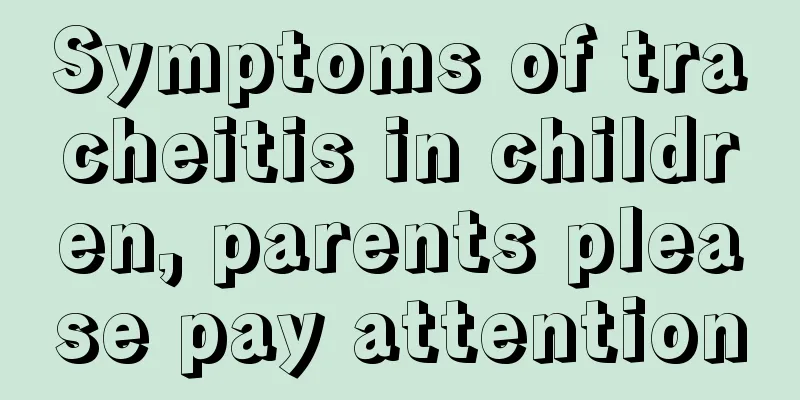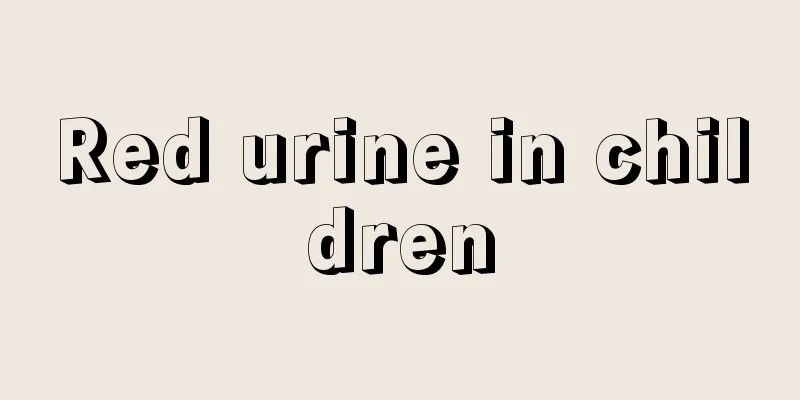What is the cause of the child's vomiting and nose bleeding?

|
Children's physical development is not particularly complete, so they need careful care during the growth process. When children grow up, some things that confuse parents will appear at different stages. Many parents will find that children are more prone to nosebleeds. For such a phenomenon, parents need to know what causes the child's nosebleed and then deal with it according to the cause. What causes nosebleeds in children? 1. Nosebleeds are prone to occur when the nasal mucosa is dry, the capillaries are dilated, there is nasal inflammation or irritation, such as various rhinitis, sinusitis, nasal tuberculosis, nasal syphilis, nasal trauma, deviated nasal septum, nasal foreign bodies or nasal tumors. 2. Poor climatic conditions, such as dry air, heat, low air pressure, cold weather, and high room temperature can cause nosebleeds. 3. Some children have the bad habit of picking their noses with their hands. When the nasal mucosa is dry, it is easy to pick their noses and cause bleeding. 4. Bad habits such as being picky about food, eating a partial diet, and not eating vegetables can also cause nosebleeds due to vitamin deficiency. 5. External injuries: Children are active and naughty, and may accidentally bump into hard objects, which may cause nosebleeds. Also, children should be taught not to pick their noses casually, as picking their noses may damage the nasal mucosa, leading to nosebleeds. 6. Nasal mucosal erosion, nasal septum deviation, etc. This is the most common cause. 7. If there is a decrease in platelets in the blood, it is recommended to check the routine blood test. It may be a complication of other diseases, so parents must pay attention. How to prevent nosebleeds in children 1. In the dry season, for children with a history of nosebleeds, families should have chloramphenicol eye ointment available, which can be applied evenly in the nasal cavity every day to moisturize the nasal mucosa. 2. Correct the child's picky eating habits, encourage him to drink more water, eat more vegetables, and arrange his diet reasonably and scientifically. 3. If children have difficulty breathing through their nose at night, you can use furosemide to moisten the nose, but never pick the nasal cavity. 4. Once nose bleeding occurs, you can use clean cotton wool to fill the nasal cavity to stop the bleeding. If there is no cotton wool, you can also use your fingers to press the sides of the nose for 5 minutes. 5. Let children with nosebleeds lower their heads (note, not raise their heads) and raise their upper limbs to increase the amount of blood returning to the superior vena cava, thereby reducing blood supply to the nasal cavity to achieve the purpose of stopping bleeding. 6. Apply a cold towel to the nose to constrict the nasal blood vessels. 7. When a child's nasal cavity is dry, you can use paraffin oil or glycerin to drip into the nose, or wipe the nasal cavity with a cotton ball dipped in clean water. 8. Control strenuous activities and avoid nasal trauma: In addition to local inflammation of the nasal cavity, strenuous activities can also cause the blood vessels in the nasal mucosa to dilate or cause nasal itching. Children picking their noses can easily cause nosebleeds. In addition to avoiding strenuous exercise, children should also develop good living habits and not pick their noses at will. 9. When the air is dry, you should eat less fried and greasy food and eat more fresh fruits and vegetables. And remember to stay hydrated. 10. Prevent respiratory diseases: If a child suffers from infectious diseases such as colds, tonsillitis, pneumonia or mumps, it is easy to cause congestion and swelling of the blood vessels in the nasal mucosa, and even cause capillary rupture and bleeding. Therefore, prevention of nosebleeds and respiratory diseases cannot be ignored. |
<<: What is the cause of the child's nose bleeding for several days in a row?
>>: Nosebleed on the left side of the child
Recommend
What's wrong with the newborn's lower body?
Many parents will find that newborn girls have bl...
Do nine-month-old babies need calcium supplements?
Calcium supplementation is most important during ...
What can primary school students eat for breakfast to nourish their brains?
Nutrition and health experts have found that some...
What are the main reasons why children are not sociable?
In the past, due to the influence of eugenics and...
What should I do if my baby has onychomycosis?
When a baby suffers from onychomycosis, parents b...
Can a six-month-old baby eat yogurt?
Babies who are still in infancy are less than one...
What is the effect of umbilical cord fungus on children?
The health of newborns is always a concern for pa...
What to do if a 3-year-old child doesn't like to eat?
After the child starts eating, he usually doesn&#...
Can children use air conditioning when they have a fever?
After entering the hot summer, due to the neglige...
Tips for dealing with a high fever in children
It is generally necessary to be careful when chil...
Why does the baby blink so hard?
It is normal for children to blink their eyes, be...
The child has blue eyes
Blue eyes are a common symptom in children. Some ...
Why do children get Kawasaki disease?
Many people may not have heard of Kawasaki diseas...
Is it a disease for a one-year-old child to sweat on his feet?
For a one-year-old baby, the immune system and ot...
How long does it take for a child's fracture to heal?
Children like to move a lot, so falling and getti...









